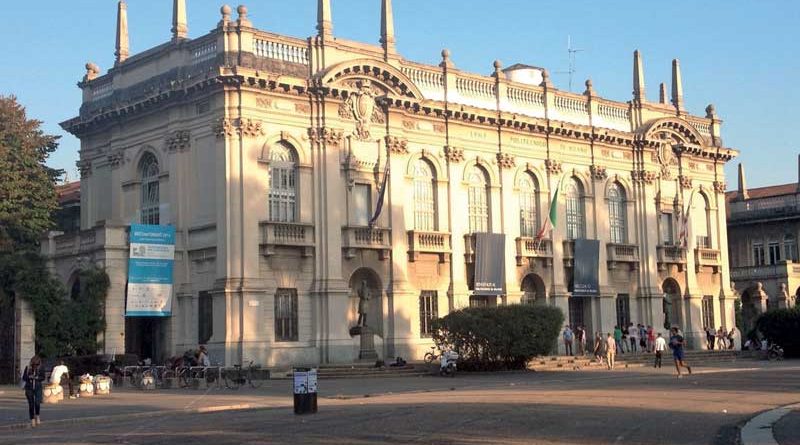Aluminium Alloys in Italian Universities
Italian Universities and technological training in the general metallurgy and light alloy segments
by Giuseppe Giordano
The Italian university system is the most important instrument to attain a higher education, both in scientific and tecnhological domains, and as regards the literary and humanities sector. Ongoing changes in the global economic system and specifically in the manufacturing industry require for all professional figures a greater basic training, enriched by the knowledge of information collection and selection systems. The following study is the result of an examination of the Italian higher education system, including the research of possible contacts between universities and the light alloy world. It is worth highlighting that the aim is evaluating whether the educational offer includes courses where light alloys and metals in general are the focus of the training. The topic of the relationship between universities and industry as regard monitoring and especially research activities has purposely not been examined. Research activity may be carried out by a subject (for instance a researcher or a work group) without affecting the training provided by that university. Italian state universities are 46. To these we should add three Polytechnics (in Turin, Milan and Bari), five “open universities”, three university institutes and a growing number of online universities. Many of the most important universities have a variable number of separate branches. As from the Eighties, the number of places where academic training may be developed increased greatly, as happened in other European countries. For instance, in Germany there are more than one hundred universities and institutes. The training offer, besides being geographically widespread, has also become complex on account of the fast increase of subjects in the various degree courses.
Degree courses and light alloys
The training offer which is interesting for the aluminium industry must be sought in different classes of degree courses. The summary table in figure 1 shows the universities with degree courses which include subjects centred around the theme of Materials science and technology (Mst) with variations which affect classification. For instance, almost all universities with an Engineering faculty have three-year mechanical engineering and/or Mst courses which relate to the engineering classes. Universities without Engineering have Mst courses in Chemistry and Physics classes. This apparently only bureaucratic incident has consequences especially in the raining offer. From the exam of the syllabi deriving from different classes, different approaches emerge which in some cases lead to degree courses where not even one subject is linked to metallurgy. At the same time, there is an increase in subjects especially in degree courses relative to chemistry and physics. The three-year Mst course in some cases has 30 courses almost entirely focused on theoretical and general aspects of chemical physics. In three-year degree courses in Mechanical Engineering a metallurgy course is almost always present. An intense presence of metallurgy courses is also found in Master’s degree courses in Mechanical Engineering. The list of universities offering a Master’s degree course in Mechanical engineering is reported in figure 2.
Special attention to the metallurgy of light alloys is found in the degree courses relative to the aerospace engineering departments present in about ten engineering faculties listed below:
• Engineering, Architecture and Motion Science Faculty, “Kore” University in Enna
• Civil and Industrial Engineering Faculty, La Sapienza” University in Rome
• Engineering Faculty, Turin Polytechnic
• Engineering Faculty, Milan Polytechnic
• Engineering Faculty, Bologna University – Cesena branch
• Engineering Faculty, “Federico II” University, Naples
• Engineering Faculty, Padua University
• Engineering Faculty, Palermo University
• Engineering Faculty, Pisa University
• Engineering Faculty, Second University, Naples
• Industrial Engineering Faculty, Salento University
Another special case is the teaching of the technology of light alloys in the courses of the Faculty of Architecture and Design. Aluminium and light alloys are very present in all that concerns aesthetic properties and surface treatments. The knowledge of materials is generally a very important aspect in all sectors of architecture and interior design and the abundance of courses on the subject is therefore not surprising, both in universities and private institutes.
The general level of technical and scientific training
Academic training in Italy affects a small share of the population and our country is in an inferior position from a quantitative standpoint, with respect to other competitor countries in Europe. It is also not true that Italy has too many graduates in humanities and few in technical and scientific subjects. According to the Inter-University Consortium, AlmaLaurea, Italy has 40 graduates in technical and scientific subjects out of every 100 (just like Germany), the OECD average is 37 technical-scientific graduates out of every 100, and in the US the figure drops to only 26 out of 100.
Regarding the light alloy sector, the Italian university system has not yet transposed into specific courses the peculiarities of these materials. In the list of subjects in scientific sectors relative to Engineering, there is only one specific course in “Science and Technology of light alloys” fitted into the syllabus of the Master’s degree in Mechanical Engineering at Bergamo’s University. Metallurgy of non-ferrous metals itself has no specific courses dedicated to it if not, in some degree course in Materials Science, as a secondary part of courses where steel science prevails.
There are exceptions to what has been stated in the above paragraph as there are, within the university system, study centres and single lecturers who carry out research and teaching activities where the topics of light alloy technology are dealt with at a high level. For fear of neglecting some, we shall not provide a list here, but the importance and role that they will be able to have, if the training of technicians in our industry will become an investment theme equal in importance to investment in machinery, should be highlighted.

